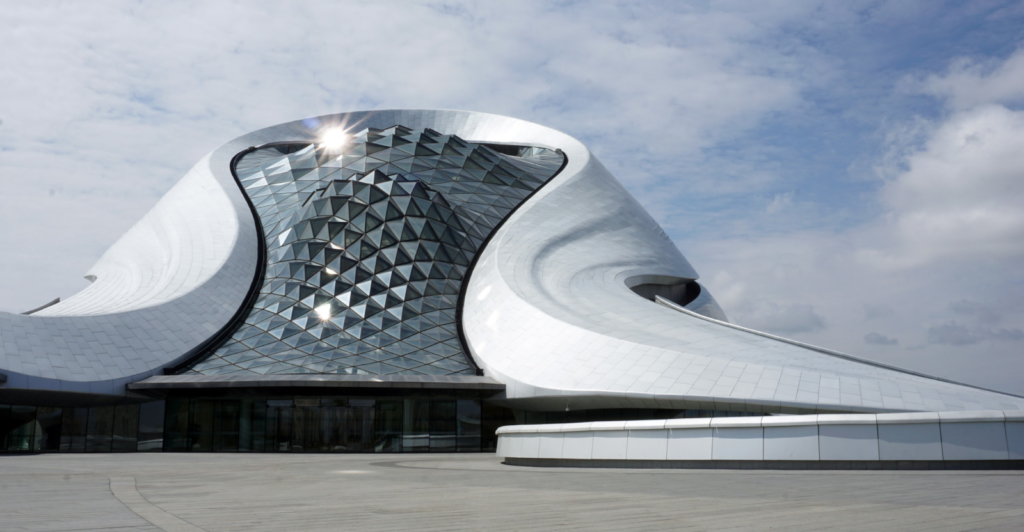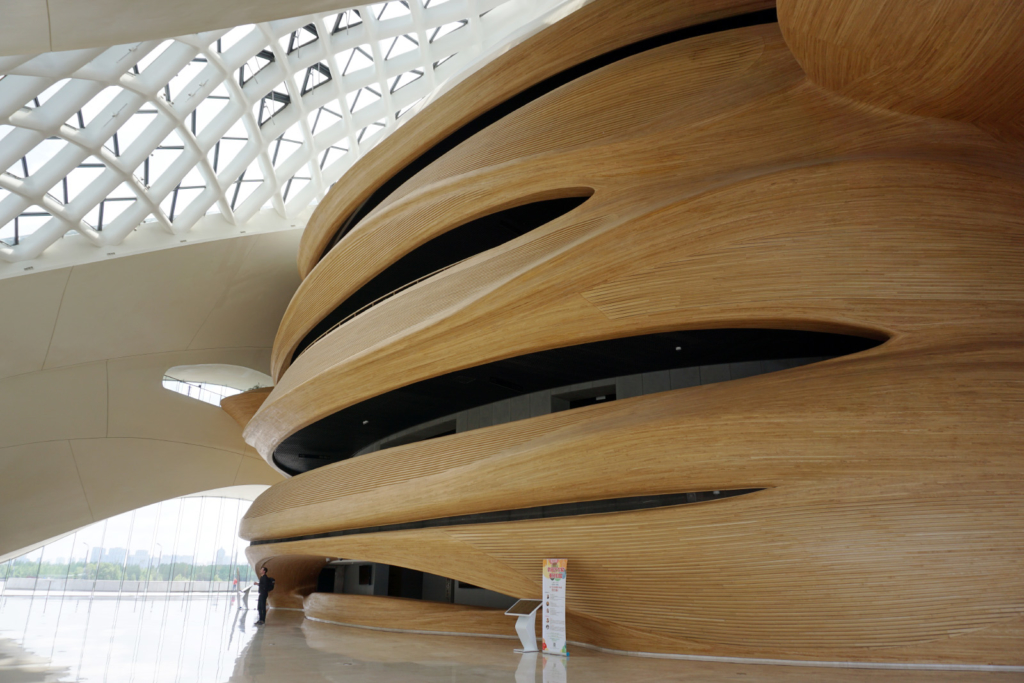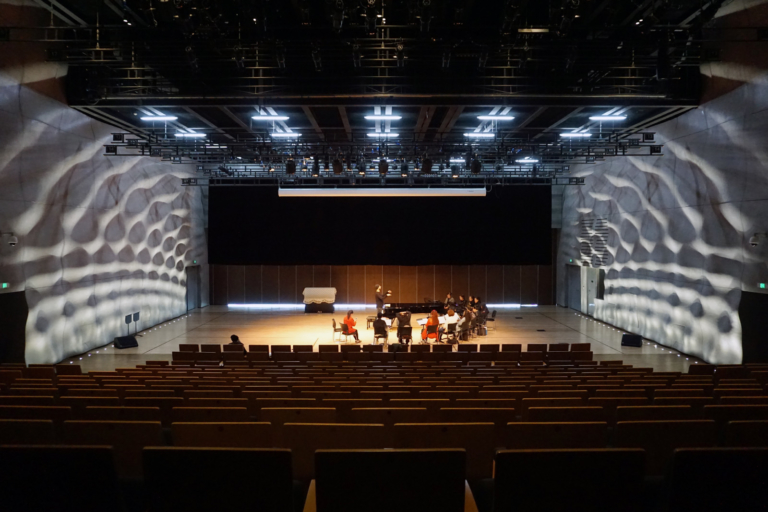Harbin Opera
Located on the north bank of Songhua River, Harbin’s culture island resides inside a large riverfront park, next to the expanding new city. It merges elements of the city and the existing landscape providing a dynamic park setting for cultural exchange.

Inspired by the flow of the Songhua River, which changes paths over seasons and years, leaving the traces of its course in undulating patterns in the flat plains of the surroundings, we paid attention to keeping the rich and diverse natural habitats by protecting the existing wetland condition and trees on site. With paths and
recreation spaces weaved into existing landscape and vegetation, the site retain its natural wet land and will function as a public park.
Constrained to the center of the site, the architectural development stands on an elevated plaza. This limits the required space needed for construction and inherits Chinese architecture’s long-standing attitude towards holistic integration and order of space, employing the essence of the East’s philosophy of a harmonized cycle between human and nature. The dynamic form is an extension of the landscape, as snow-capped mountains stand gentle and harmonious inside the park.

Presenting a warm and inviting element, the grand theater is clad in rich wood, emulating a wooden block that has been gently eroded away. Sculpted from Manchurian Ash, the wooden walls gently wrap around the main stage and theater seating. From the proscenium to the mezzanine balcony the grand theater’s use of simple materials and spatial configuration provides world-class acoustics. The grand theater is illuminated in part by a subtle skylight that connects the audience to the exterior and the passing of time.

Within the second, smaller theater, the interior is connected seamlessly to the exterior by the large, panoramic window behind the performance stage. This wall of sound-proof glass provides a naturally scenic backdrop for performances and activates the stage as an extension of the outdoor environment, inspiring production opportunities.
Harbin Opera House emphasizes public interaction and participation with the building. Both ticketholders and the general public alike can explore the façade’s carved paths and ascend the building as if traversing local topography. At the apex, visitors discover an open, exterior performance space that serves as an observation platform for visitors to survey the panoramic views of Harbin’s metropolitan skyline and the surrounding wetlands below. Upon descent, visitors return to the expansive public plaza, and are invited to explore the grand lobby space.
Facts
Type: Cultural
Site Area: 1.800.000sqm
Size: 79.000sqm
Role: Project Architect
Status: Completed, 2015
Location: Harbin, China
Bas was the Project Architect while at MAD.
Photographs by Bont Design.
www.i-mad.com












